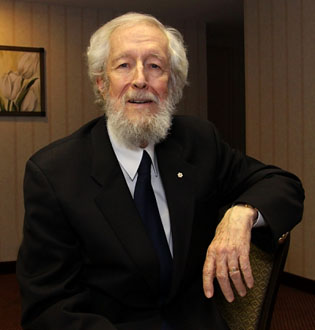Allan Dwan
Allan Dwan, born Joseph Aloysius Dwan, director, producer, writer (b at Toronto 3 Apr 1885; d at Los Angeles 21 Dec 1981). Allan Dwan left Toronto with his family at 11 years old to settle in Illinois. He attended North Division High School in Chicago and got a degree in electrical engineering from Notre Dame University, Indiana, in 1907 before landing a job as a story editor and lighting supervisor with Essanay Films in 1909. He was sent out to Hollywood where, between 1911 and 1913, he learned to direct by watching actors, and turned out more than 250 one-reelers, mostly westerns, for the American Film Company. He also served as a second-unit supervisor of many other films, and wrote and edited his own.
Allan Dwan's engineering background was useful in solving early technical problems and he is credited with inventing the dolly shot (using a car) in 1915. In 1917 he set up one of the most famous shots in all of silent film, the camera swooping down and taking in all of the huge Babylonian set in D.W. Griffith's Intolerance. It was Dwan's suggestion to put an industrial crane on railway tracks, so the camera could move forward and backward and up and down at the same time.
Dwan's career peaked in the 1920s with a series of highly successful films for Douglas Fairbanks, including Robin Hood (1922; featuring a castle that was the largest set ever built for the movies) and The Iron Mask (1929), and Manhandled and Wages of Virtue, both in 1924, for Gloria Swanson. He directed 2 for Shirley Temple, Heidi (1937) and Rebecca of Sunnybrook Farm (1938), and his Sands of Iwo Jima (1949) earned its star, John Wayne, an Oscar nomination. Allan Dwan continued directing well into the 1950s, and shot his last film, Most Dangerous Man Alive, at 76 years old. He is listed in the Guinness Book of Records as having directed more films than any other person.

 Share on Facebook
Share on Facebook Share on X
Share on X Share by Email
Share by Email Share on Google Classroom
Share on Google Classroom


